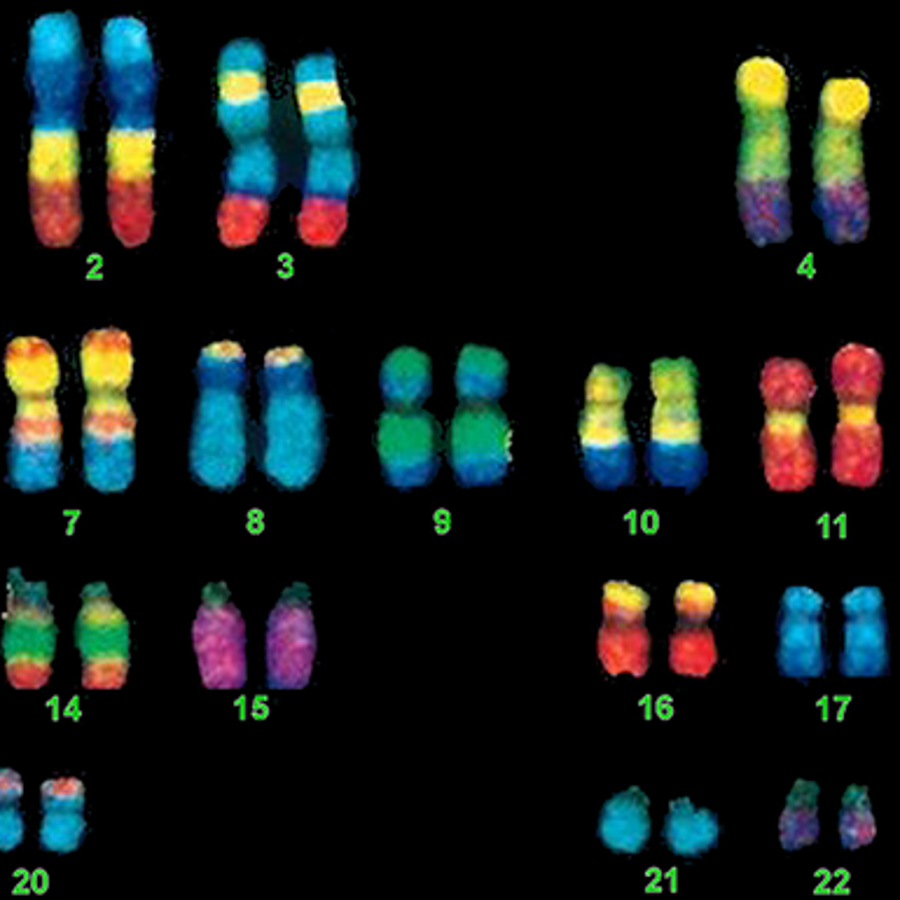
Could people get both copies of one of their chromosomes from one parent?
November 14, 2008

- Related Topics:
- Chromosomes,
- Meiosis,
- Rare events
A curious adult from New Mexico asks:
"Can people get both copies of one of their chromosomes from one parent? What would be the result of something like that?"
People can definitely end up with both copies of one of their chromosomes coming from a single parent. In fact, it is common enough that geneticists have even given it a name, uniparental disomy (UPD). (Pretty snappy, huh?)
UPD is common enough to get its own name but is still pretty rare. When it happens, UPD can cause all sorts of problems.
You can end up with traits that should be impossible for you to have leading to paternity issues. More seriously, you can end up with diseases you should never have been able to get.
To understand how UPD happens, we first need to understand how we inherit our chromosomes. Then we can explore where this process goes wrong to cause UPD. And why having two copies of a chromosome from a single parent can cause problems.
Inheriting Chromosomes
Remember, our DNA is split up into sections called chromosomes. Humans have 23 different chromosomes.
People usually have two copies of each of their chromosomes (for a total of 46). One set comes from mom and the other from dad.
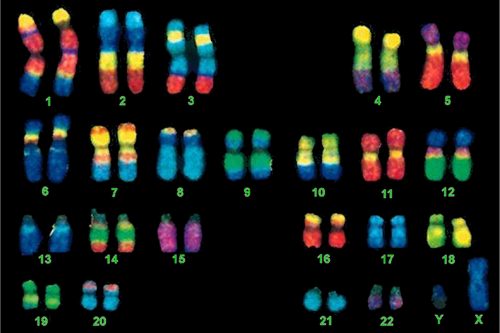
This happens because the sperm and the egg each have one set of chromosomes. When the sperm fertilizes the egg, the fertilized egg ends up with both sets of chromosomes.
Sometimes though, in the process of making a sperm or egg (called meiosis), a mistake is made. Sometimes you end up with one extra copy of a chromosome (called a trisomy) or a missing chromosome (called a monosomy). This is where conditions like Down Syndrome and Turner syndrome come from.
You can think of UPD as Nature's way of trying to get around these problems. Basically, UPD is a way to try to fix the mistake that led to trisomy or monosomy. There are three main ways that UPD can happen.
Two wrongs make a right
The first way is basically where a missing chromosome is compensated for with an extra one. Imagine that there is an egg with an extra chromosome 21. If a sperm with one copy of chromosome 21 fertilized the egg, then the child would end up with Down syndrome.
But what if that egg happened to get fertilized by a sperm lacking a chromosome 21? Now the child would have the usual number of chromosomes but both copies would come from mom. The baby would not have Down syndrome.
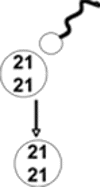
Losing a Chromosome
The second way is if the fertilized egg loses a chromosome along the way. Imagine that an egg with two copies of chromosome 21 is fertilized by a sperm with one copy. Usually this fertilized egg would grow into a baby with Down syndrome.
Imagine that early on, as the fertilized egg grows and develops, there is another error and a chromosome 21 is lost. If the chromosome that is lost is the dad's chromosome 21, then the remaining cells will have 2 copies of mom's chromosome 21.
The baby may not even end up with Down syndrome if the cells used to make the placenta are those that have the extra chromosome 21. Otherwise, the child will have some cells with two copies of chromosome 21 and some with three. The child will have mosaic Down syndrome.
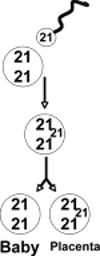
Gaining a Chromosome
Another possibility is duplication. Imagine that we have a sperm that lacks a chromosome 21. It fertilizes a normal egg. The resulting fertilized egg now only has one chromosome 21 from mom. Having only one copy of chromosome 21 is normally fatal.
Imagine that when the fertilized egg divides, it makes a mistake and two copies of chromosome 21 end up in one cell and none in the other. Now you end up with a baby that has two chromosome 21's from mom.
All three of these possibilities have been shown to happen. In addition, it doesn't have to be a whole chromosome that comes from one parent. Sometimes only a piece of a chromosome comes from just mom or just dad.
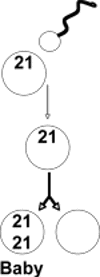
Traits and Diseases
As I said before, getting both chromosomes from one parent can definitely cause problems. These are usually from getting a recessive trait or disease when you shouldn't. Or because of imprinting (see below).
Genes can come in different versions. And some gene versions win out over other versions. The winner is dominant and the loser is recessive.
Since we have two copies of most of our genes, it is possible for someone to have a dominant and a recessive version at the same time. These folks are called carriers of the recessive trait.
Usually to end up with a recessive trait or disease, both parents have to be carriers (or have the trait or disease). But with UPD, someone can end up with these traits or diseases even if only one parent is a carrier. Here are a couple of examples to hopefully make this all clearer:
Trait
Imagine that a dad with AB blood type has an O child with a mom who has an O blood type. By the usual rules this is impossible. But nothing in genetics is impossible!
One way he could still be the dad is because of UPD. To understand how, we need to step back and go into a little more detail about blood type.
Blood type is determined by different combinations of the three versions of the ABO gene, A, B, and O. People with AB blood type have an A version on one of their chromosomes and a B version on the other. O people have two O versions.
Normally any children from these two would be AO or BO (A or B blood type). But if the child happens to get both copies of chromosome 9 from mom, then the child will have an O blood type. Even though it is "impossible."
This can be true for other recessive traits too.
Disease
The same sort of thing can work for diseases like cystic fibrosis (CF). CF happens when both copies of the CFTR gene on chromosome 7 have certain DNA differences.
Normally to get CF you need to get the different CFTR versions from both parents. Imagine that a child has a dad who is a carrier and a mom who is not. These parents aren't worried about their kids having CF because only one of them is a carrier.
If a child happens to get both copies of chromosome 7 from dad, then that child has a 50% chance of ending up with CF (depending on which of dad's chromosomes he or she gets). So in this case, a child ends up with CF even though only one parent has the disease.
This CF example isn't theoretical. It has actually happened.
Imprinting
Another big concern with UPD is imprinting. Our DNA is marked so our cells know which piece comes from mom and which comes from dad. This usually doesn't matter but there are cases where it does.
Some diseases are due to improper imprinting. These sorts of diseases include things like Prader-Willi and Angelman Syndrome. Both of these diseases can be caused by UPD.
So people can definitely get both copies of one of their chromosomes from a single parent. This is rare but real. And it can sometimes cause real problems.

Author: Dr. D. Barry Starr
Barry served as The Tech Geneticist from 2002-2018. He founded Ask-a-Geneticist, answered thousands of questions submitted by people from all around the world, and oversaw and edited all articles published during his tenure. AAG is part of the Stanford at The Tech program, which brings Stanford scientists to The Tech to answer questions for this site, as well as to run science activities with visitors at The Tech Interactive in downtown San Jose.
 Skip Navigation
Skip Navigation
